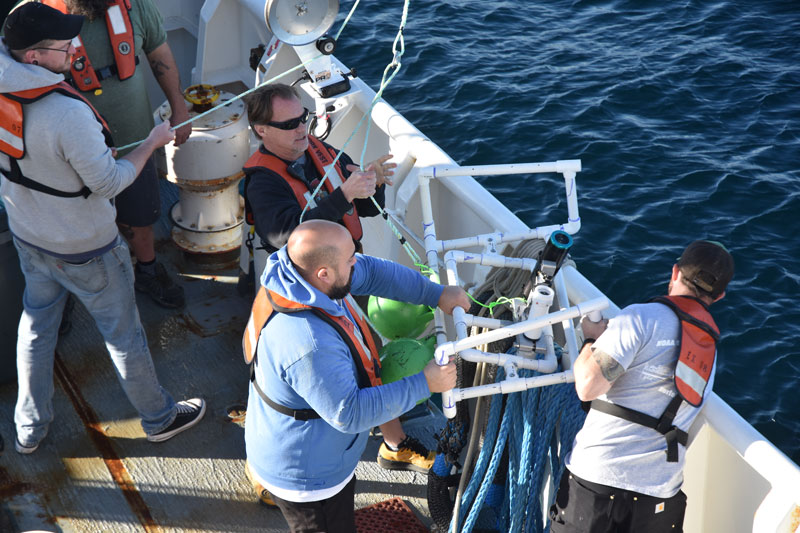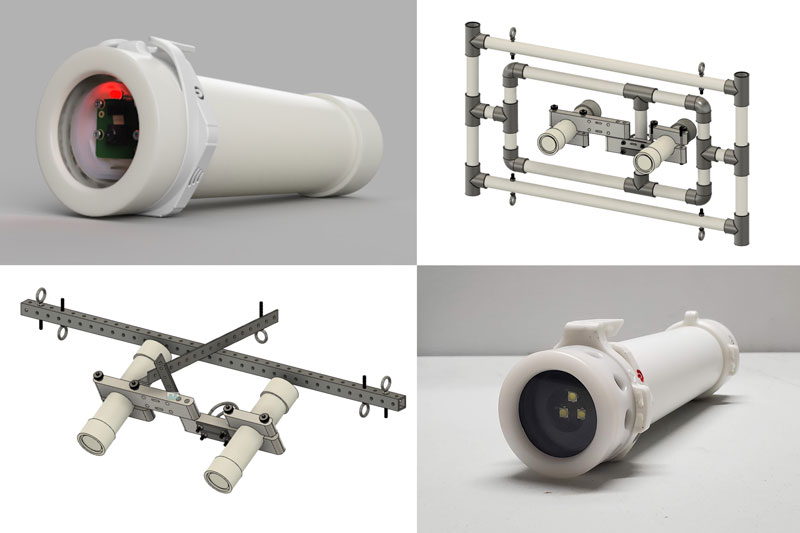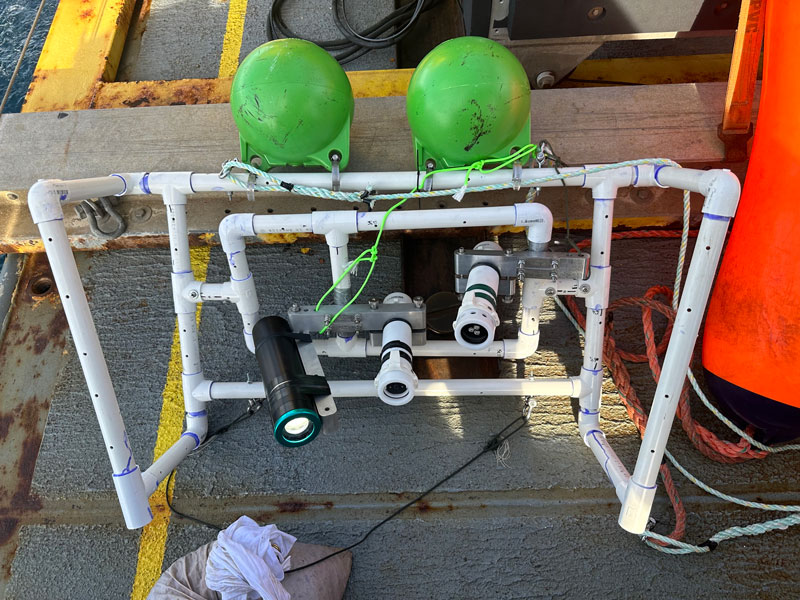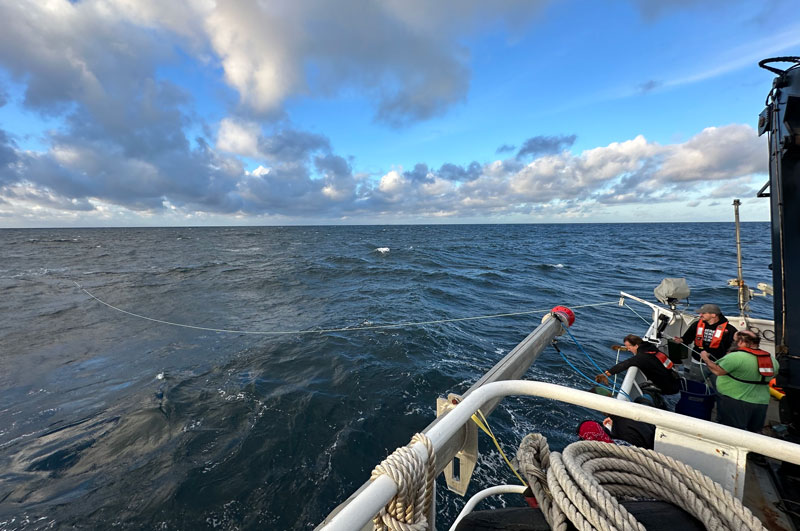2023 EXPRESS: West Coast Exploration (AUV and Mapping)
(EX2309)
Low-Cost Deep-Ocean Exploration Technology and Deployment Trials

Ocean Discovery League (ODL) joined this year's 2023 EXPRESS: West Coast Exploration (AUV and Mapping) expedition on NOAA Ship Okeanos Explorer. During the expedition, the ODL team tested different deployment systems for their low-cost deep-sea camera and sensor system, Maka Niu.
Ocean Discovery League's mission is to accelerate deep-ocean exploration by developing accessible systems to broaden the community of those who explore and understand the deep sea. Through easy-to-use, low-cost sensors and deployment techniques, more deep-sea explorers can conduct research worldwide and dramatically increase the pace of deep-ocean discovery. Many previously developed "low-cost" systems still cost tens of thousands of dollars and require advanced deployment capability. To be accessible to the broadest user base possible, ODL is developing deep-sea systems ideally priced under $2,500 (U.S. dollars) for the camera, lighting, sensor, and deployment.

ODL's current system, Maka Niu ("coconut eye"), is a compact, user-friendly imaging and sensing system in a pressure-tolerant housing depth rated to 1,500 meters built with the MIT Future Ocean Lab. The system was co-designed with marine scientists, conservationists, and educators worldwide, initially as part of educational workshops with the Polynesian Voyaging Society.
The Maka Niu system consists of both a camera and a light module. The camera module records imagery and collects GPS, depth, and temperature data. The light module was developed with funding supported by the National Marine Sanctuary Foundation and NOAA Ocean Exploration.

Since the development of Maka Niu, ODL has created a global community of over 20 test users across 11 countries. Over the past 2 years, this community has field-tested over 25 Maka Niu modules, and their feedback has helped shape the future of ODL's systems development.
2023 EXPRESS Expedition Testing
During the 2023 EXPRESS expedition, ODL's objective was to test various low-cost deployment configurations using materials easily accessible to most global communities. The team tested three deployment frames, two made from PVC pipe and one from an aluminum bar.
A timelapse video shows the deployment of one of the PVC test frames containing the Maka Niu camera and light module during the 2023 EXPRESS: West Coast Exploration (AUV and Mapping) expedition on NOAA Ship Okeanos Explorer. Video courtesy of Katie Leeper, Ocean Discovery League. Download largest version (mp4, 15.7 MB)
The frame bases were weighed down, and floats were attached to ensure they remained upright and did not get tangled in the line. Retrieval of the units involved tried-and-tested models used ubiquitously by fishermen, an off-the-shelf crab pot puller. This simple system can be deployed off various vessel sizes and is far less expensive than traditional reach-grade winches. These tests will help inform the team's deployment recommendations to their community of test users.

Throughout the expedition, the ODL team completed successful engineering trials of this low-cost exploration tool and deployment configurations, including various lighting intensities and camera settings in depths ranging from 200 to 600 meters (656 to 1,968 feet). The findings will be consolidated and incorporated into the next generation of deep-ocean sensor systems ODL is starting work on in early 2024.
By Katie Leeper, Community Engagement Manager, Ocean Discovery League
Published February 1, 2024